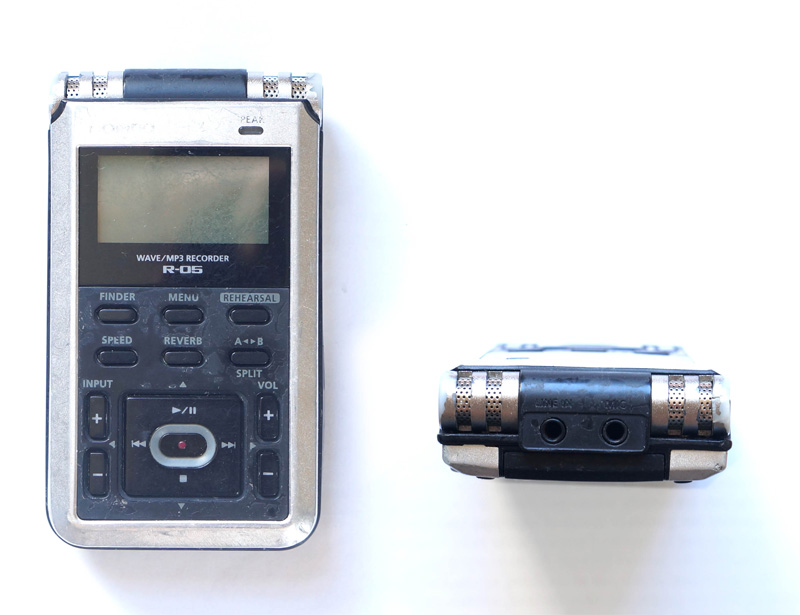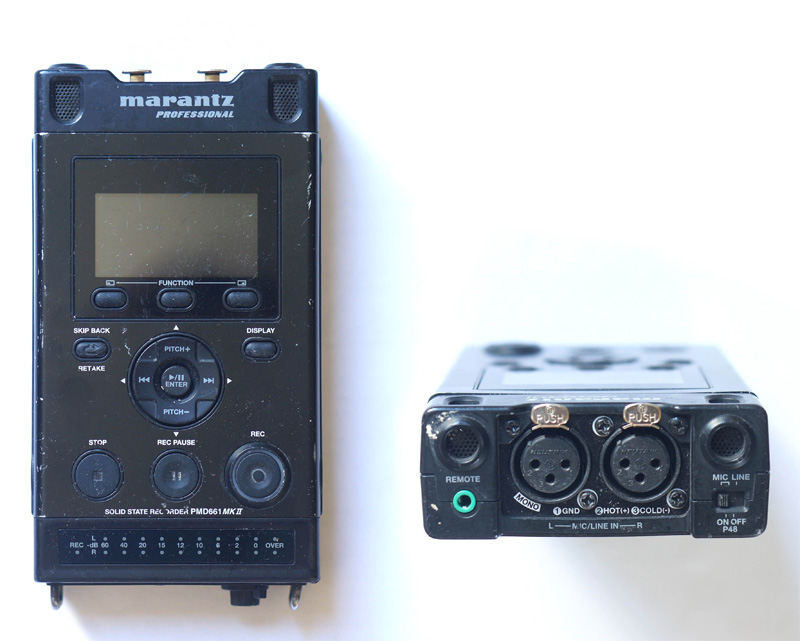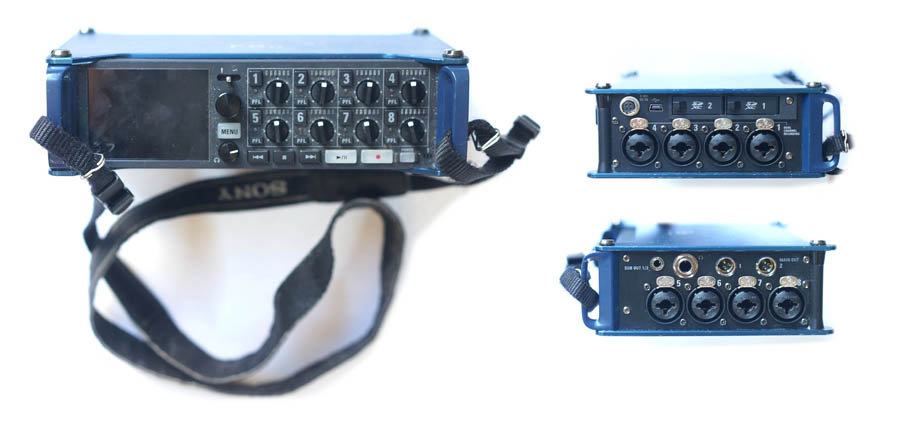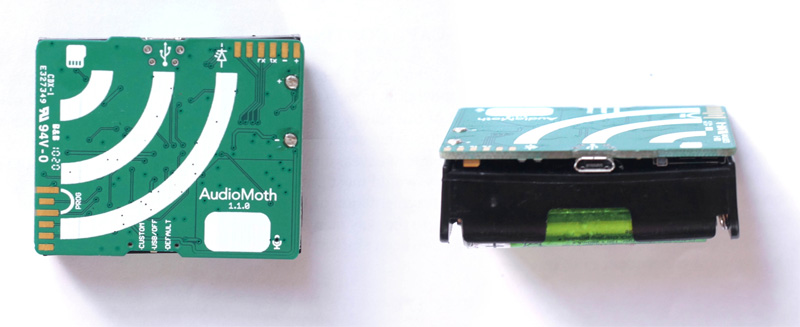TUTORIAL for the HANDBOOK FOR
ACOUSTIC ECOLOGY

|
FIELD RECORDING
|
Field Recording
Devices
There are many options for field recording devices available
on the market. The ultimate choice depends on the specificity
of work that one embarks on plus personal preferences. A rough
categorization based on the level of complexity and amount of
features is:
1. Pocket size (or dictaphone-like) recorders
2.
Hand-held recorders (relatively larger and more robust if
compared to the pocket-size ones)
3.
Multi-track field recorders (as the name suggests,
facilitating multi-channel recording of 8 or even more
tracks simultaneously)
4. Automated field recording systems
Pocket-size
recorders such as Roland R-05 featured in the
photograph below, or similar Zoom H1, Sony PCM D-100, are
affordable options enabling flexibility, easy portability, and
multiplicity of uses both indoors and outdoors. They typically
come with built-in stereo mics. While those built-in mics are
the main way of capturing the audio signal, there is often a
possibility to connect a limited number (often one or two)
external microphones.

Roland R-05 (click to enlarge)
Marantz PMD 661 MK II featured in the photo below is
a handheld solid-state recorder. This device belongs to a
family of more professional devices also known as a linear
recording device (other models in this family are for
example Tascam DR-40X or Zoom X4n). Their construction is
solid and robust; the case is usually made of metal which
makes it more durable and suitable for working in various,
also unpredictable environments, whereas the casing for
small, pocket-size recorders is plastic.

Marantz PMD 661 MK II (click to enlarge)
These handheld recorders are usually equipped with two XLR
inputs enabling the use of many models of phantom-powered
external microphones (or hydrophones). These models are also
equipped with built-in microphones, however, they typically
play a secondary role. They are suitable for all kinds of
outdoor and indoor stereo recording field, interviews,
focused, directional as well as omnidirectional recording.
Zoom F8n is a multitrack field
recorder. This is a family of the most professional and
sophisticated field recording devices. Similar to Zoom F8n
(8 tracks) are Sound Devices MixPre-6 or 10, and Tascam
DR-701D (which is a 6 track recorder). Besides being used
professionally in the film industry as sound capturing
devices, due to their versatility in terms of types of
microphones they support, multitrack recorders are
increasingly deployed among field recordists and sound
artists engage in creative approach documenting soundscapes.

Zoom F8n multi-channel recorder (click to enlarge)
These devices can also function as USB audio interfaces and
external sound cards. While compatible with the majority of
available multitrack recording software, they can make for a
small-scale, mobile sound studio environment. Due to their
relatively larger size than the models mentioned above,
multitrack recorders are usually carried in a bag or special
protective cases which also accommodate space for extra
equipment such as microphones, battery packs, and cables.
Beyond these types of recorders, there has
been an emergence of new kinds of recorders that facilitate
passive, or differently put, automated recording. An example
here is AudioMoth, an audio monitoring station
developed as a collaboration between scholars interested in
ecoacoustic monitoring. It is a low-cost, open-source acoustic
monitoring device used for tracking audible changes within
wildlife.

AudioMoth audio monitoring station
Using analog MEMS microphone (Micro-Electromechanical
Systems), besides audible sounds AudioMoth works with
ultrasonic frequency range. Designed with low battery
consumption, devices such as this one (or similar but more
costly Song Meter SM4 Acoustic Recorder and SET- Soundscape
Explorer Terrestrial) can be programmed to remain in one place
and record passively for long periods of time, even several
days or weeks.
index
home

